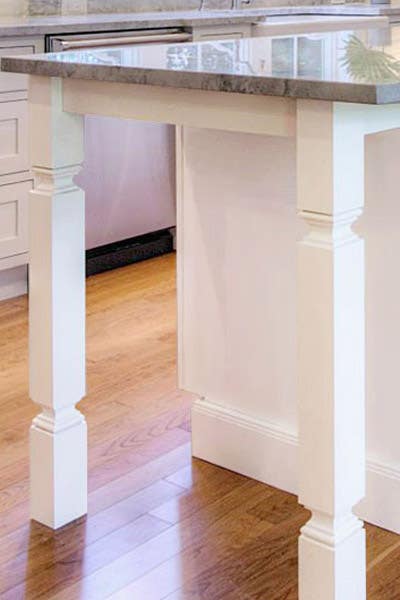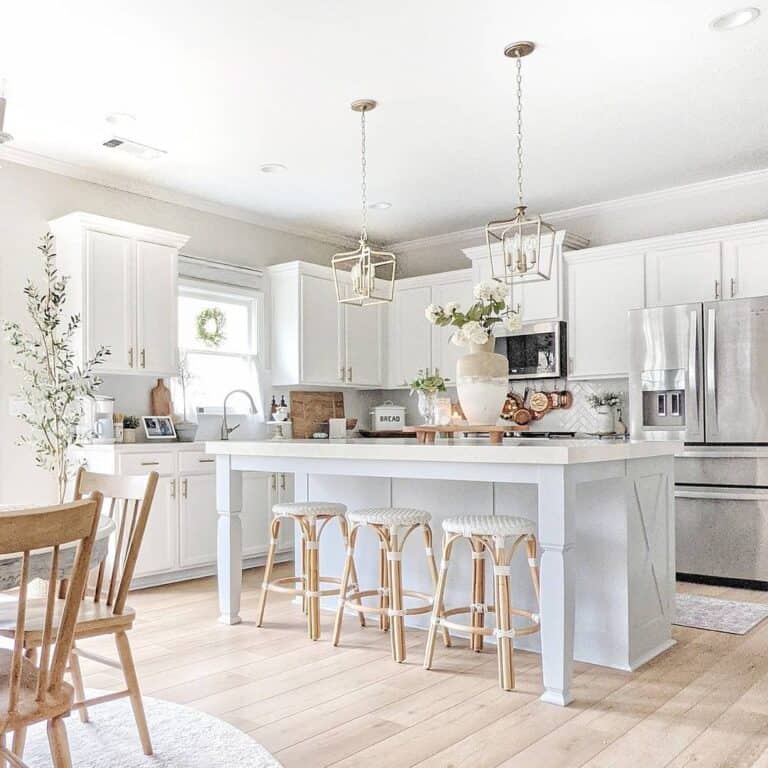Add Beauty and Character to Your Area with Legs For Kitchen Island Creations
Add Beauty and Character to Your Area with Legs For Kitchen Island Creations
Blog Article
Trick Considerations for Finding the most effective Legs For Kitchen Area Island for Your Style
When selecting the optimal legs for your kitchen island, numerous essential considerations enter into play that can significantly influence both functionality and appearances. The choice of height, style, and product have to align with your total kitchen style to ensure an unified look. Furthermore, stability and maintenance needs are critical for long-lasting use and convenience of treatment. Comprehending these factors can boost your cooking area's functionality and visual allure, however the subtleties of each factor to consider can commonly be ignored. What effects might these selections carry your kitchen's general environment?
Determine Your Style Choice
Determining your design choice is critical when picking the ideal legs for your kitchen island. The legs of your kitchen area island not only offer a useful objective but also add substantially to the total visual of the area. Recognizing your design style-- be it modern, rustic, typical, or industrial-- is important.
For a contemporary kitchen, think about streamlined, minimalistic legs that enhance tidy lines and open rooms. Typical kitchens typically prefer transformed or ornate legs, which can add a touch of sophistication and refinement.
Furthermore, consider the elevation and proportion of the legs in relationship to the island's surface. Inevitably, your style choice will affect not only the selection of legs however additionally the general consistency of your kitchen area's design.
Select the Right Product
Choosing the appropriate material for your cooking area island legs is pivotal in making certain both longevity and visual charm. Numerous materials use distinct advantages, and the selection frequently mirrors your design preferences and useful requirements.
Timber is a preferred choice, supplying heat and flexibility. It can be discolored or repainted to match your kitchen decoration, making it versatile to various styles, from rustic to modern. Timber might require routine maintenance to maintain its appearance and stability.

If you seek an one-of-a-kind touch, think about acrylic or glass products. They can create an illusion of area and agility in your kitchen, making them an exceptional selection for smaller areas - Legs For Kitchen Island. These choices might require careful handling and maintenance to prevent scrapes.
Inevitably, the material you select need to align with your cooking area's general layout, ensuring that the legs serve both ornamental and practical functions.
Take Into Consideration Elevation and Percentages
When creating a kitchen area island, height and proportions play an essential role in guaranteeing functionality and comfort,. The basic height for a cooking area island typically varies from 36 to 42 inches, straightening with standard counter elevations or bar heights, respectively. This measurement is crucial for balancing with surrounding feceses and counter tops, allowing ease of usage during dish prep work and social communications.
Furthermore, the island's proportions should complement the general cooking area format. A well-proportioned island ought to not overwhelm the area; rather, it needs to produce a balanced visual. Take into consideration the ratio in between the island's width and length, guaranteeing it provides ample surface location without crowding the kitchen. A basic guideline is to keep a width of 24 to 48 inches, promoting motion and accessibility.
Furthermore, the elevation of the legs or base can affect the visual charm and functionality. Taller legs might lend a much more modern-day, airy feel, while much shorter ones can stimulate a conventional, based look. Ultimately, very carefully considering height and percentages will certainly cause a kitchen island that is both visually enticing and functionally reliable, boosting the overall style of the area.
Assess Security and Durability
A kitchen area island's legs need to not only match its elevation and percentages yet additionally provide adequate security and longevity to sustain daily tasks. The legs are vital to the general capability of the island, as they bear the weight of the counter top and any added lots, such as home appliances or cooking jobs.
When evaluating security, it is important to take into consideration the leg layout and material. Tough metal or solid hardwood legs typically offer superior toughness contrasted to lighter materials like crafted timber or plastic. Furthermore, a larger base can enhance stability, lowering the threat of tottering or tipping during usage.
Toughness is similarly essential; the legs must withstand damage from daily use. Take into consideration coatings that safeguard against scrapes, dents, and moisture, particularly in a kitchen setting. Evaluate the top quality of building and construction, such as fastenings and joints, he said which can dramatically affect the legs' lasting performance.
Eventually, purchasing well-crafted legs that prioritize stability and resilience will certainly guarantee your kitchen island continues to be a reputable work space for many years to find, boosting your culinary experiences while preserving visual allure.
Consider Upkeep and Treatment
Maintenance and care are important factors to consider for guaranteeing the durability and efficiency of cooking area island legs. When picking legs, it is important to examine the products made use of, as various options require varying levels of upkeep. Wooden legs may call for periodic refinishing or sealing to avoid moisture damage and scratches, while steel legs may need regular brightening to keep their sparkle and protect against corrosion.
Additionally, the surface put on the legs can influence maintenance needs. A high-gloss covering may be easier to tidy however might show finger prints and scrapes quicker than a matte finish. It is advisable to pick products and surfaces that complement your way of living; for instance, if you often host celebrations, select resilient materials that can hold up against deterioration.
Additionally, consider the cleansing process entailed in preserving these legs. Smooth surfaces typically need minimal effort, while detailed styles might collect dust and gunk, necessitating even more labor-intensive cleaning approaches. Legs For Kitchen Island. Eventually, considering the maintenance and treatment required for your selected kitchen island legs will certainly not just improve their visual charm yet likewise guarantee their functional honesty over time
Final Thought
To conclude, picking the optimal legs for a kitchen area island necessitates cautious factor to consider of various aspects, including design style, product selection, stability, upkeep, and elevation. Each component plays a crucial role in guaranteeing that the legs not only boost the aesthetic appeal of the cooking area however also provide the necessary assistance and durability for day-to-day use. A well-informed choice will eventually add to a useful and like this visually pleasing cooking area atmosphere.
The legs of your kitchen island not just serve a useful function but additionally contribute significantly to the total aesthetic of read the full info here the room.Maintenance and treatment are vital factors to consider for ensuring the long life and performance of kitchen area island legs. Wood legs may call for periodic refinishing or securing to protect against wetness damages and scratches, while metal legs might need routine brightening to maintain their luster and protect against rust.
Eventually, factoring in the maintenance and treatment required for your chosen kitchen island legs will not just improve their visual charm but additionally ensure their functional integrity over time.

Report this page